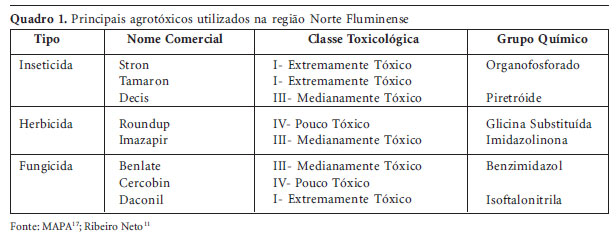This paper seeks to apply the DPSEEA model (WHO) to identify major health risks to rural workers and the environment associated with the intensive use of pesticides in the State of Rio de Janeiro, based on an analysis of official public documents and a review of the (national and international) literature. It emphasizes the two main representative branches of agriculture in the state: family farming in the mountain region and the monoculture of sugarcane in the flatlands. Results show that the bulk of the determinants identified in the DPSEEA Matrix are related to deficiencies in actions for monitoring and surveillance of pesticide use, as well as a lack of technical assistance provided by the Public Sector in Rio de Janeiro State. Most of the actions developed in the state address the effects of pesticide exposure and, to a lesser extent, exposure to these chemicals, failing to focus on the higher levels of the matrix (such as driving forces and pressure). These are considered, by several authors, as the most appropriate when tackling the complex and systemic issues, such as the scope of this paper. By means of this study, an attempt was made to enable the application of the DPSEEA Model to assist in environmental and occupational health surveillance initiatives.
occupational health; health indicators; pesticides; rural labor; public health




